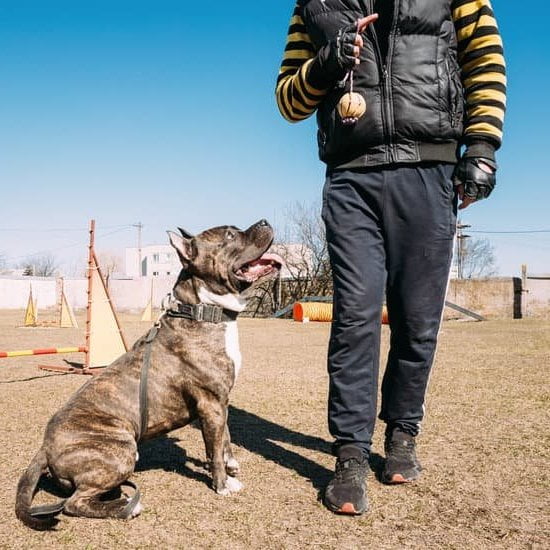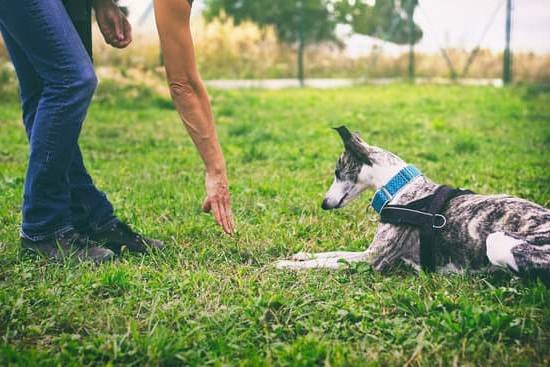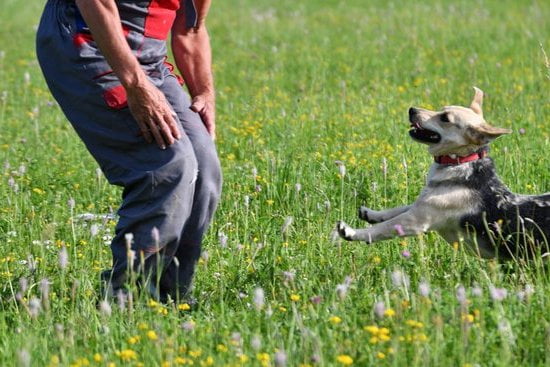Training a service dog is a complex and rewarding endeavor that significantly impacts the lives of individuals with disabilities. Service dogs play a crucial role in providing assistance, support, and companionship to their handlers, making it essential for them to undergo proper training. This article will delve into the various aspects of training service dogs, from understanding their role to handling training challenges, as well as the legal rights and responsibilities of service dog owners.
Service dogs serve as invaluable companions for people with disabilities by assisting with tasks, alerting to medical issues, and providing emotional support. They undergo extensive training to develop the skills necessary to perform these essential duties effectively. Understanding the role of a service dog is vital in appreciating the importance of their training and the significant impact they have on the lives of their handlers.
Proper training is crucial for service dogs as it not only ensures that they can perform their duties effectively but also contributes to their well-being and safety. This article will explore the various aspects of training a service dog, from choosing the right candidate for training to implementing basic obedience and advanced techniques. Additionally, we will discuss public access training, handling challenges during training, and the legal rights and responsibilities associated with owning a service dog.
Understanding the Role of a Service Dog
Service dogs play a crucial role in supporting individuals with disabilities, providing assistance and enhancing their quality of life. These specially trained dogs can perform a wide variety of tasks, such as guiding individuals who are visually impaired, alerting individuals with hearing impairments to important sounds, pulling wheelchairs, retrieving items, and even providing emotional support to those with psychiatric or emotional disabilities.
The role of a service dog goes beyond being a pet and becomes an invaluable partner and companion for their handler.
In order to fulfill their duties effectively, service dogs must undergo extensive training tailored to the specific needs of their handlers. This can include learning basic obedience commands as well as more advanced tasks that directly assist their human partners.
It is essential for the service dog to be able to perform these tasks reliably and consistently in various environments and situations. This level of training ensures that the dog is prepared to support its handler in their daily activities and navigate the world alongside them.
Properly trained service dogs not only improve the lives of their handlers but also contribute positively to society by promoting independence and accessibility for individuals with disabilities. They are not just pets; they are working animals that make a significant difference in the lives of those they assist.
Understanding the vital role that service dogs play in the lives of people with disabilities highlights the importance of comprehensive training programs that enable these highly skilled animals to fulfill their purpose effectively.
| Service Dogs | Percentage |
|---|---|
| Serve individuals with visual impairments | 50% |
| Assist individuals with mobility challenges | 25% |
| Support individuals with psychiatric or emotional disabilities | 15% |
The Importance of Proper Training for Service Dogs
Proper training for service dogs is crucial in ensuring that they can effectively perform their duties and assist their handlers. Service dogs play a vital role in the lives of individuals with disabilities, providing them with support and independence. As such, it is essential that these dogs receive thorough training to fulfill their responsibilities.
Training a service dog involves much more than teaching basic obedience commands. These dogs must be trained to assist with specific tasks based on the needs of their handlers, whether it’s guiding individuals with visual impairments, alerting those with hearing impairments to certain sounds, or providing assistance to individuals with mobility issues. Additionally, service dogs must also undergo public access training and socialization to ensure they can confidently navigate various environments and interact appropriately with people.
It is important for service dog trainers to use positive reinforcement methods when training these specialized animals. This approach not only helps in building a strong bond between the dog and its handler but also enables the dog to learn and retain the necessary skills more effectively.
Positive reinforcement also creates a more enjoyable and less stressful experience for both the dog and its handler during the training process. Ultimately, proper training is essential for ensuring that service dogs are able to perform their duties reliably and safely while enhancing the quality of life for their handlers.
Choosing the Right Dog for Service Training
When considering training a service dog, it is crucial to start with the right candidate. Not all dogs are suitable for service dog training, so choosing the right one is essential for the success of the program. The ideal service dog candidate should possess certain characteristics such as a calm temperament, intelligence, willingness to please, and good social skills.
One of the most important factors to consider when choosing a dog for service training is their breed. While any breed can potentially become a successful service dog, certain breeds are more commonly used due to their natural abilities and disposition. Breeds like Golden Retrievers, Labradors, and German Shepherds are often preferred for service work due to their friendly nature, intelligence, and trainability.
Aside from breed considerations, individual temperament should also be evaluated when selecting a dog for service training. It’s important to choose a dog that is confident but not overly dominant or aggressive. Additionally, they should be comfortable in various environments and able to remain focused and calm amidst distractions.
Lastly, health and physical attributes should not be overlooked when choosing a service dog candidate. They should be free from genetic health issues that could impede their ability to perform tasks effectively. Overall sound health and physical structure are important for a service dog that will need to undergo rigorous training and assist their handler on a daily basis.
| Characteristic | Consideration |
|---|---|
| Breed | Golden Retrievers, Labradors or German Shepherds |
| Temperament | Confident but not overly dominant or aggressive; comfortable in various environments |
| Health | Free from genetic health issues; overall sound health and physical structure |
Basic Obedience Training for Service Dogs
Service dogs play a vital role in the lives of individuals with disabilities, providing essential support and assistance. One crucial aspect of preparing a dog for service work is ensuring they are well-versed in basic obedience training. This foundational training sets the stage for the more advanced skills that service dogs need to acquire in order to effectively assist their handlers.
Essential Commands
Basic obedience training for service dogs typically includes teaching them fundamental commands such as sit, stay, come, heel, and down. These commands form the building blocks for more complex tasks that service dogs will need to perform to aid their handlers in their daily lives.
Positive Reinforcement
Using positive reinforcement methods such as treats, praise, and rewards is crucial in basic obedience training for service dogs. Consistency and patience are key when working with these intelligent and intuitive animals, as they respond best to clear communication and encouragement. By reinforcing desired behaviors with positive stimuli, trainers can effectively shape the dog’s behavior and strengthen their bond with the handler.
Distraction Training
Another important aspect of basic obedience training for service dogs is desensitizing them to distractions. This involves exposing them to various environmental stimuli such as loud noises, unfamiliar sights, or crowded places while still maintaining their focus on following commands. This type of training helps ensure that the service dog remains attentive and responsive even in challenging or stimulating situations.
Advanced Training Techniques for Service Dogs
Once a service dog has mastered the basic obedience training, it is essential to move on to more advanced techniques to ensure that they can effectively assist their handler in various situations. Advanced training for service dogs focuses on refining their skills and teaching them specific tasks that are tailored to the needs of their handler. This stage of training requires patience, dedication, and a deep understanding of the unique abilities and limitations of the individual dog.
Task-Specific Training
One of the key components of advanced training for service dogs is task-specific training. Depending on the needs of their handler, service dogs may be trained to perform a wide range of tasks such as retrieving items, opening doors, providing stability, or even alerting to medical issues. Each task requires in-depth training and careful reinforcement to ensure that the dog can reliably perform the task when needed.
Scent Detection Training
Many service dogs are trained to detect the scent of certain medical conditions such as diabetes, seizures, or allergies. Scent detection training involves teaching the dog to recognize specific scents and respond accordingly. This advanced skill can be life-saving for individuals who rely on their service dogs to alert them to potential health risks.
Distraction Training
Advanced training for service dogs also includes intensive distraction training. Service dogs need to remain focused and attentive in various environments, despite potential distractions. This type of training helps them stay calm and composed in crowded or noisy settings, ensuring that they can fully concentrate on their handler’s needs.
By focusing on these advanced techniques during the training process, service dogs can become invaluable partners for individuals with disabilities, providing independence and enhancing their quality of life.
Public Access Training and Socialization
When training a service dog, public access training and socialization are crucial components. These elements ensure that the dog is well-behaved and comfortable in a variety of environments, allowing them to assist their handler effectively in any situation. Here are some key aspects to consider when focusing on public access training and socialization for a service dog:
- Exposure to different environments: Service dogs need to be exposed to a wide range of environments to become comfortable and confident in various settings. This includes busy streets, crowded parks, shopping malls, public transportation, restaurants, and more.
- Behavioral training in public spaces: It’s essential for service dogs to exhibit impeccable behavior in public spaces. This includes remaining calm amidst distractions, walking politely on a leash, not begging for food, and refraining from excessive barking or other disruptive behaviors.
- Socialization with people and other animals: Service dogs must be comfortable interacting with people of all ages and backgrounds, as well as with other animals. This helps them remain focused on their handler while being surrounded by different individuals and pets.
In addition to these aspects, it’s also important to educate the public about interacting with service dogs. This can prevent distractions or potentially harmful situations for both the dog and its handler. Properly addressing public access training and socialization during the training process ensures that the service dog is well-prepared to fulfill its duties effectively in any environment while maintaining the appropriate behavior.
Handling Service Dog Training Challenges
Training a service dog can be an incredibly rewarding experience, but it is not without its challenges. Here are some common difficulties that handlers may encounter during the training process:
- Distractions: Service dogs must be able to focus on their handler’s commands even in busy or chaotic environments. Overcoming distractions and maintaining obedience in these situations can be a major challenge.
- Task-specific training: Depending on the handler’s needs, a service dog may require specialized training for tasks such as alerting to seizures, guiding the visually impaired, or retrieving items. Teaching these complex behaviors can be time-consuming and requires patience and consistency.
- Health and physical limitations: Some dogs may face physical challenges that make certain tasks difficult or impossible for them to perform. Handlers may need to work closely with trainers to find alternative methods or accommodations for these situations.
Despite these challenges, there are strategies that can help handlers overcome difficulties in their service dog training journey:
- Consistent reinforcement: Positive reinforcement techniques can help reinforce desired behaviors in service dogs. Consistency and patience are key to success.
- Persistence: Training a service dog is a long-term commitment that requires ongoing practice and reinforcement. It’s important for handlers to stay dedicated and persistent, even when facing setbacks.
- Seeking professional guidance: Working with experienced trainers and behaviorists can provide valuable support and guidance when encountering training challenges. These experts can offer personalized advice and solutions tailored to the specific needs of the handler and their service dog.
By addressing these challenges with patience, determination, and professional support, handlers can help their service dogs reach their full potential in providing assistance and improving their quality of life.
The Legal Rights and Responsibilities of Service Dog Owners
One key aspect of the legal rights of service dog owners is the right to access public places with their service animal. The Americans with Disabilities Act (ADA) ensures that individuals with disabilities have the right to be accompanied by their service dog in all areas where the public is allowed. This includes restaurants, stores, public transportation, and other venues. Furthermore, service dog owners cannot be charged extra fees or treated differently due to their animal’s presence.
In addition to their rights, service dog owners also have certain responsibilities under the law. One such responsibility is to ensure that their service dog is well-behaved and under control at all times while in public spaces.
This includes basic obedience training and socialization to ensure that the animal can effectively perform its duties without causing disruptions or safety concerns for others. It is important for service dog owners to adhere to these responsibilities in order to maintain the positive reputation of service dogs as valuable members of society.
Overall, understanding the legal rights and responsibilities of owning a service dog is essential for both handlers and those they encounter in public spaces. With proper knowledge and adherence to these laws, service dog owners can confidently navigate various environments while benefiting from the invaluable support provided by their well-trained canine companion.
The Impact of a Well-Trained Service Dog on the Handler’s Life
In conclusion, the impact of a well-trained service dog on the handler’s life cannot be overstated. These specially trained animals provide invaluable support and assistance to individuals with disabilities, allowing them to lead more independent and fulfilling lives. By offering physical assistance, emotional support, and companionship, service dogs have a profound effect on the well-being of their handlers.
The bond between a service dog and its handler goes beyond that of a typical pet-owner relationship. Through the rigorous training process, these dogs learn to anticipate their handler’s needs, provide comfort in times of distress, and perform essential tasks that enable their owners to navigate daily life with greater ease. As a result, the presence of a well-trained service dog can significantly improve the quality of life for individuals facing physical or mental challenges.
Furthermore, the positive impact of a well-trained service dog extends beyond just the handler’s immediate needs. These animals also serve as ambassadors for the disability community, helping to raise awareness and promote understanding of the important role that service dogs play in society. Ultimately, by highlighting the transformative impact of these remarkable animals, we can ensure that more individuals in need have access to the life-changing support provided by a well-trained service dog.
Frequently Asked Questions
How Do I Teach My Dog to Be a Service Dog?
Teaching your dog to be a service dog requires consistent training, socialization, and obedience. Start with basic commands like sit, stay, and come, then gradually introduce tasks specific to the individual’s needs.
What Is the Best Age to Train a Service Dog?
The best age to train a service dog is typically between 6 months and 2 years old. This is the period when dogs are most receptive to training and can also undergo necessary socialization experiences.
Is It Ever Too Late to Train a Service Dog?
It is not necessarily too late to train a service dog, but it may require more time and effort if the dog is older. Older dogs may have established behaviors that need to be adjusted, so patience and consistency are key in training.

Welcome to the blog! I am a professional dog trainer and have been working with dogs for many years. In this blog, I will be discussing various topics related to dog training, including tips, tricks, and advice. I hope you find this information helpful and informative. Thanks for reading!





